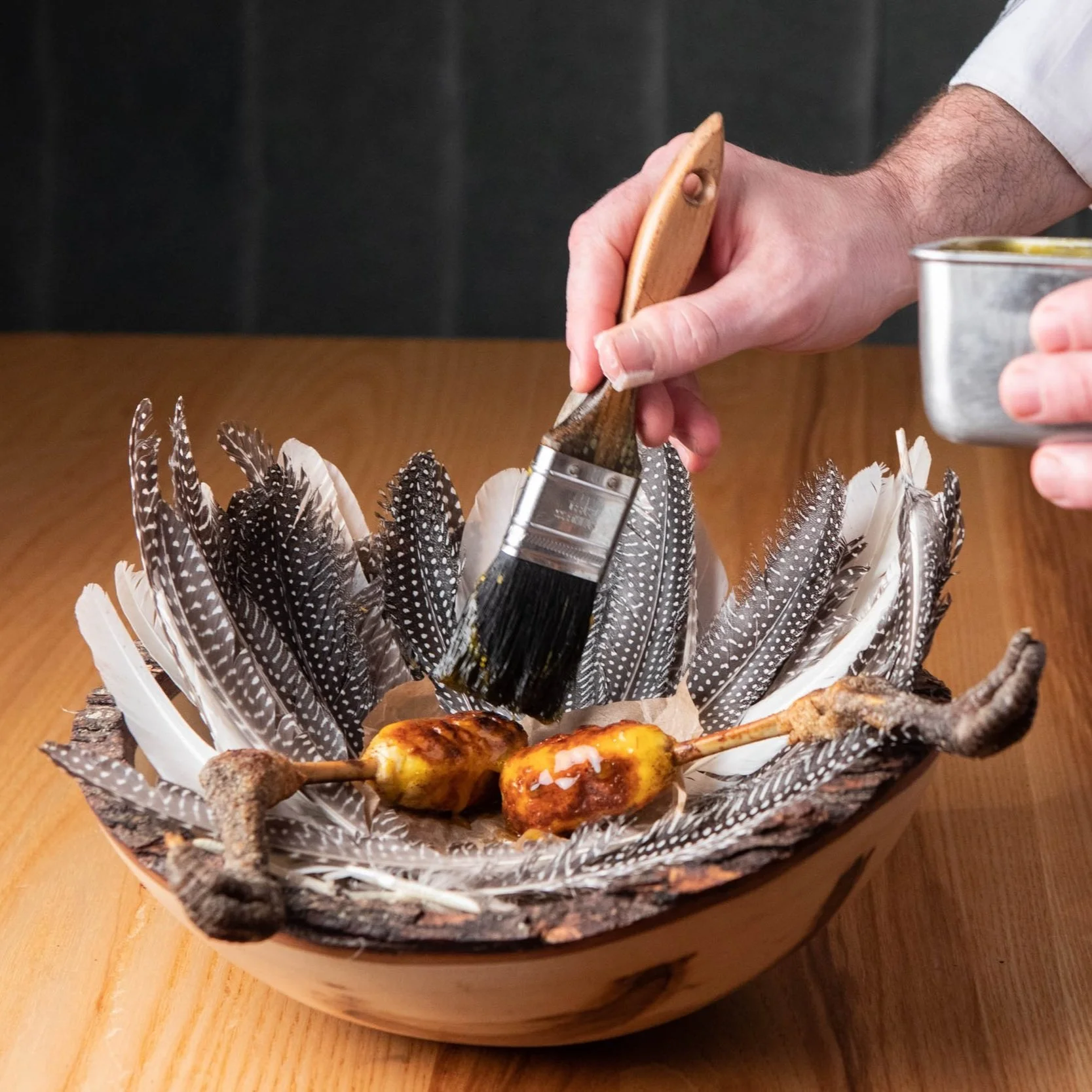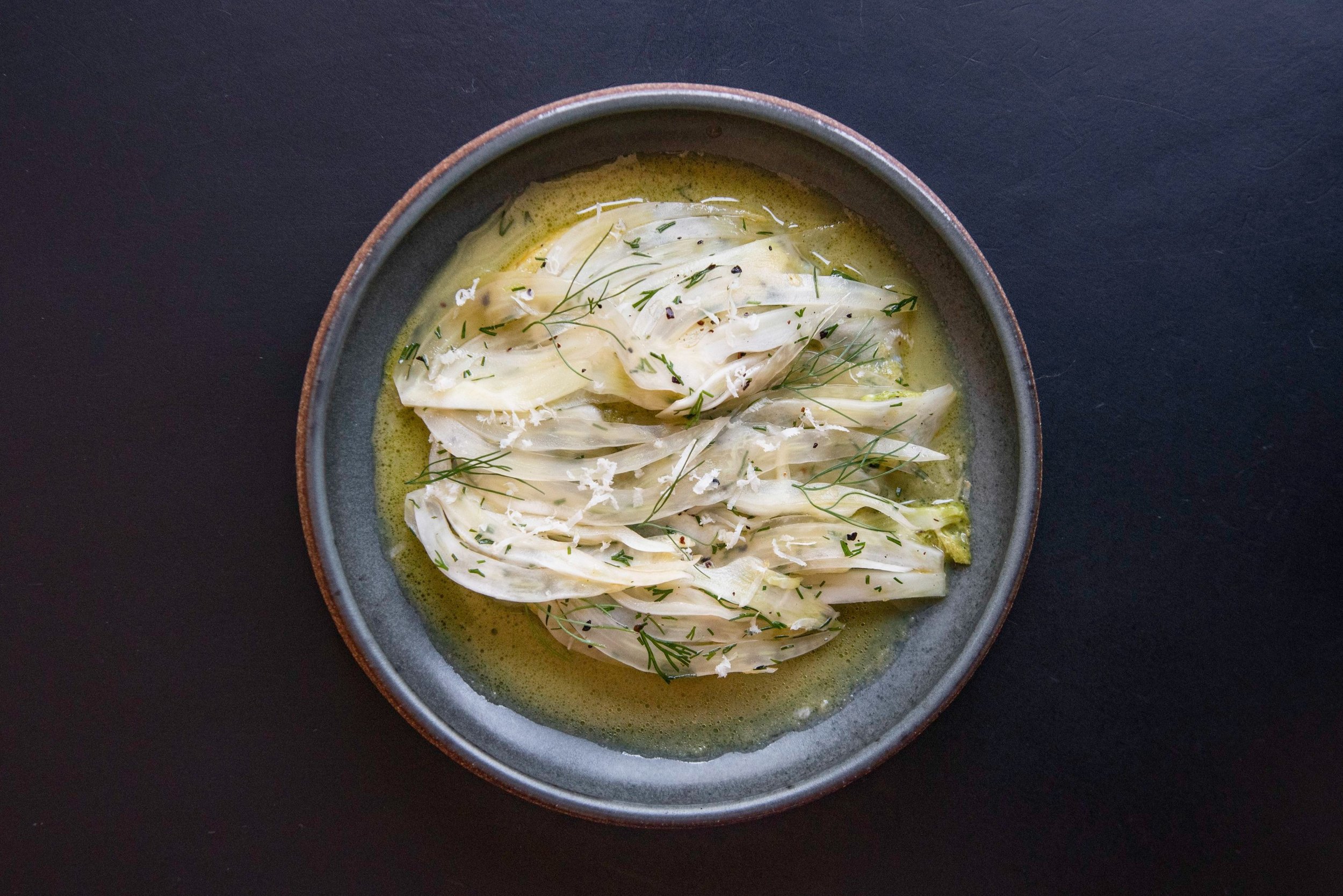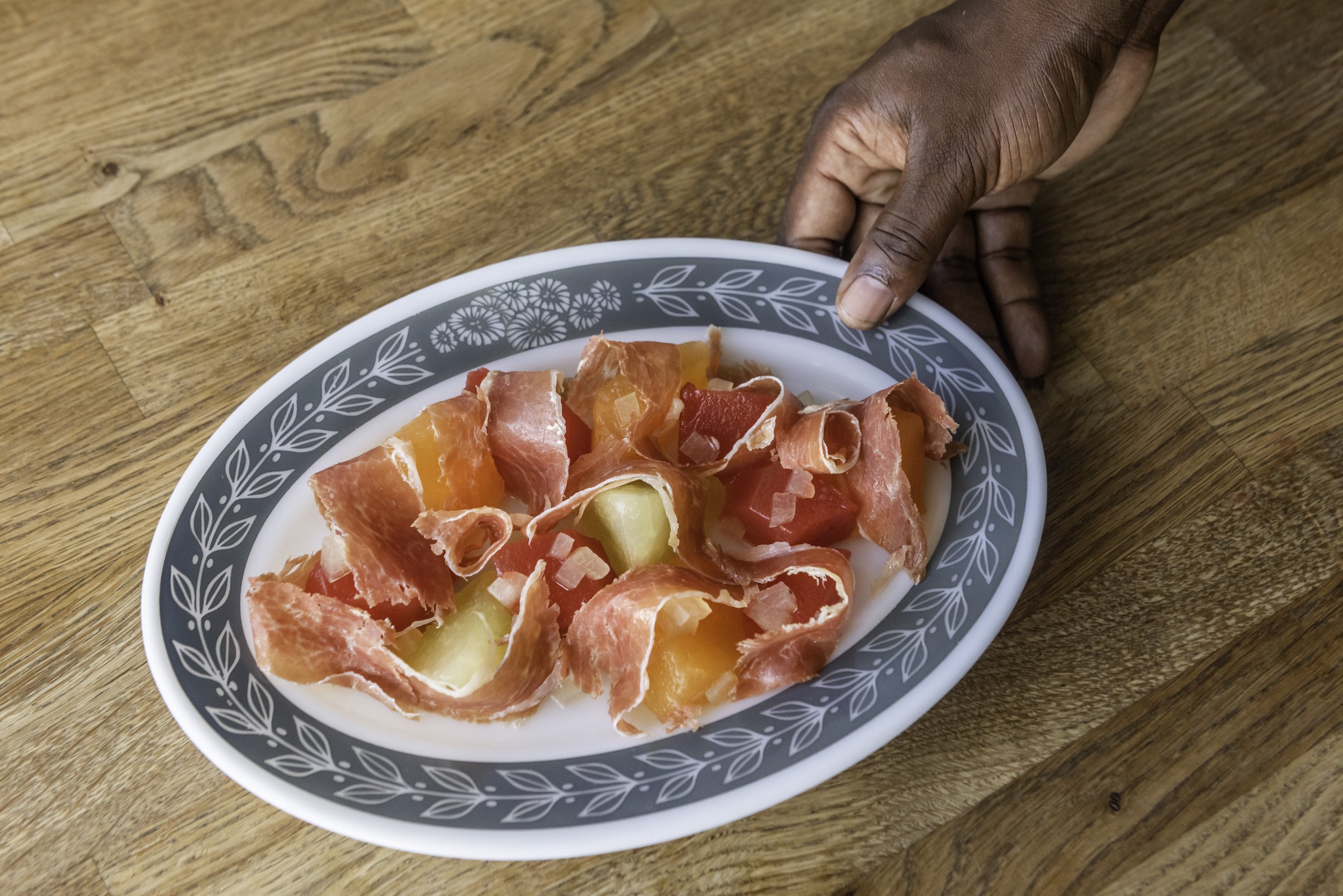Lights, Camera, Dinner
Everybody loves a show. At these three San Francisco spots, each chef has their own reasons (and aesthetics) for bringing the drama.
The theater of dining is alive and well in San Francisco, from communal eating at one-table-dining-room and daytime retail spot Merchant Roots, to sprawling Birdsong where almost every seat faces the open, Michelin-star kitchen, and on to Avery, where bites arrive in the hands of primates. It’s quite an evolution from the unfussy plating of Chez Panisse or the austerity of fine dining minimalism. Is it the Instagram effect? The Lazy Bear effect (but most of the drama there is driven by the format)? Is it a hook for the new monied diners swimming through the streets of San Francisco like schools of fish? If it were the influence of the Rocas in Spain or Massimo in Italy, we would see the effect in other cities. Maybe it’s a quirk of San Francisco, where imaginative chefs are seeking to add value to their dining experience in a competitive market. Each chef here has their own reasons for bringing the drama.
Putting The Guest At Ease at Avery
Chef Rodney Wages was shopping at local gift store Gumps when he happened upon a monkey. It was bronze, holding plates, and 80% off. “Avery is meant to be laid back. I don’t want people to feel like they have to sit up straight and wear a jacket,” says Wages. “[The monkey is featured] in one of our first courses, so it puts people at ease.” It’s hard not to feel unselfconsciously giddy when a monkey is holding your spherical Danish pancake, aka Æbleskiver, filled with Dungeness crab, crispy crab follicles, roasted garlic, pickled jalapeño, and nori.
Making Sense At Birdsong
Chef Chris Bleidorn’s guinea hen yakitori hits the table dressed to impress. The meat, skewered on the hen’s leg so guests must grasp the claw to eat it, rests in a bed of its own speckled feathers. The high-impact plating is utilitarian, says Bleidorn. “For us, theatrics have to make sense. It allows us to showcase something [diners might otherwise not see].” Bleidorn blends the hen’s white meat into a sausage and makes a mousse out of the dark meat before combining them with Indian spices. He uses the hen’s yolk and grilled bones for a glaze that makes the meat glisten with flavor. It’s a feast for the eyes and a feather in Bleidorn’s cap.
More Time, More Interaction at Merchant Roots
“My partner and I were talking about the challenge of a seven-day-a-week restaurant, and how it’s just kind of a flawed system. We wanted to do something more interactive with guests,” says Chef Ryan Shelton. Five days a week Merchant Roots is a craft grocer and café and three nights a week—Thursday, Friday, Saturday—it’s a restaurant with one table for eight guests. For Shelton’s epic elements-themed dinner, the last course is “Air,” and the “plate” is built out from a wooden tray with slats on the bottom originally meant for Japanese tea service. Instead, the tray contains a virtual forest of twisted bonsai limbs and mosses. Resting on the branches are baklava nests with white chocolate-coconut eggs, and underneath are small bowls of poached pear, pistachio ice cream, cardamom, orange zest, and vanilla. The sweet nectar from the baklava drips like dew onto the desserts below. The scene comes alive when Shelton strategically pours water over the landscape. The liquid falls through the slats and hits a bed of dry ice, sending “fog” billowing into guests laps, making them part of the performance.







